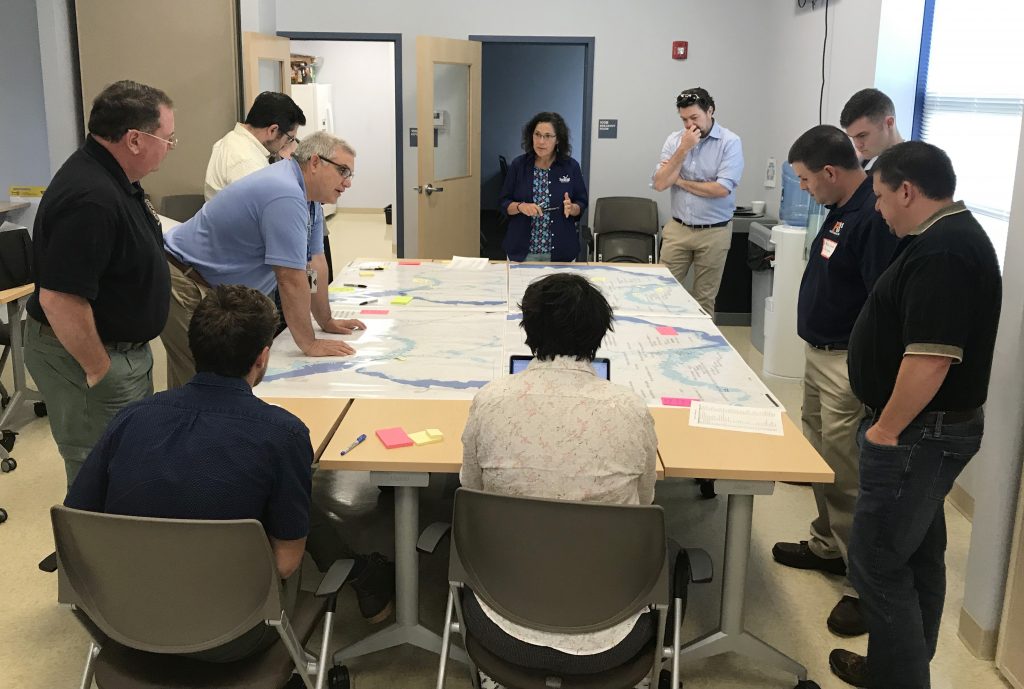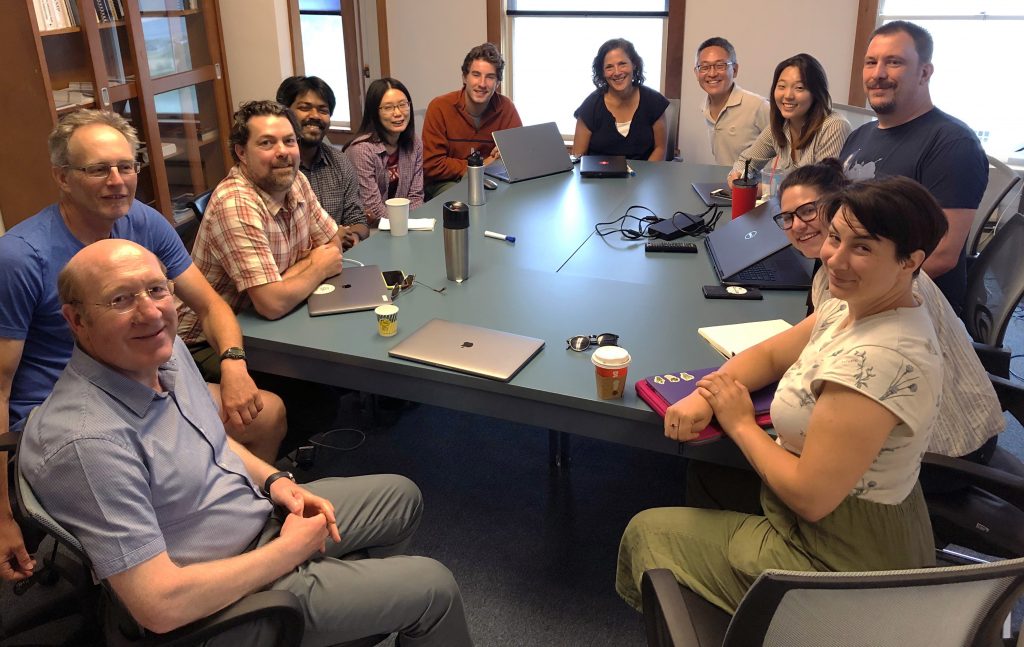
Coastal Resilience Center (CRC) researchers from the University of Rhode Island (URI), led by Principal Investigator Dr. Isaac Ginis, have partnered with area emergency managers to lead a series of training scenarios focused on coastal storms.
Starting in May 2019, URI researchers began a series of workshops intended to gather new data for the CRC project, “Modeling Combined Coastal and Inland Impacts from Extreme Storms,” with the Providence (R.I.) Emergency Management Agency (PEMA). The workshops focus on potential impacts to critical infrastructure located in the floodplain along Providence, R.I.’s rivers and harbor.
Twenty-five people attended the initial meeting, which established a steering committee to help refine a list of 10 critical infrastructure and key resources sectors for which researchers have been conducting focus group and/or key informant interviews. Organizers plan for 7-10 focus groups during 2019, including gathering input from PEMA, Rhode Island Emergency Management and the Rhode Island Department of Health. The research team has also held several site visits with committee participants: the Rhode Island Blood Center, Providence Community Health Center, Johnson and Wales University, the Rhode Island Department of Public Works and the Providence Foundation.
“We are collecting data from emergency managers to develop a pilot project showcasing the ADCIRC Prediction System™ modeling capabilities to demonstrate both physical impacts – such as flooding and wind – and consequences such as communication disruptions and loss of critical functions,” said co-PI Dr. Austin Becker.
The local critical infrastructure data will be integrated with numerical modeling and to deliver results to emergency managers in real time at the Rhode Island state emergency operations center during storm events. CRC researchers are also developing visualizations of model outputs and identifying the best software platform for delivering information to end users.

“Providence is where much of the state leadership is housed as well as being the largest population center in the state,” Dr. Ginis said. “We are targeting this area to develop and demonstrate a real-time hazard and impact prediction system for hurricanes and nor’easters in southern New England.”
The project team also includes CRC co-PIs Pam Rubinoff, Tetsu Hara and David Ullman of URI; Rhode Island School of Design instructor Peter Stempel; and students Noah Hallisey, Samantha Radov, Xuanyu Chen and Mansur Ali Jisan (URI), and Joyce Pak (Brown University)
The workshops include an assessment of cascading consequences of extreme weather – flooding and winds – impacting critical infrastructure within the 500-year floodplain. Steering committee members have expressed an interest in assessing infrastructure statewide, Rubinoff said.
“Key critical infrastructure concerns among the committee are varied, with a common theme of losing power and physical access to their facilities,” Rubinoff said.

In addition to emergency managers and the U.S. Coast Guard, the steering committee includes representatives from Providence’s department of public property, police/fire department and water supply board; the Rhode Island state office of water resources, infrastructure bank and department of transportation; the Narragansett Bay Commission; and the Lifespan health system.
In past years, URI researchers participated in joint storm training exercises with Rhode Island Emergency Management Agency (RIEMA) and Federal Emergency Management Agency (FEMA). That four-day exercise used simulations of “Hurricane Rhody,” a fictitious hurricane hitting southern New England that was developed alongside RIEMA and the Federal Emergency Management Agency (FEMA). The URI Marine Affairs Visualization Lab then developed high-resolution 3D visualizations to show how impacts of concern would occur as the storm advanced.
